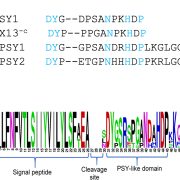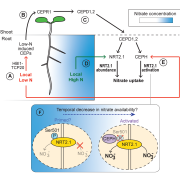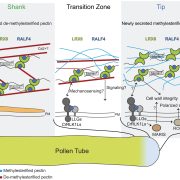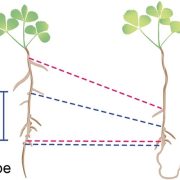REF1 peptide is a wound signal that promotes plant regeneration
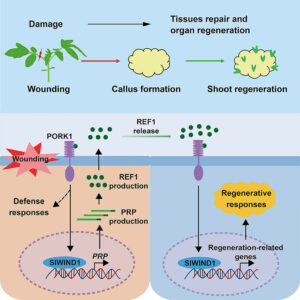 Plants have a remarkable ability to reprogram and regenerate as needed following wounding. This trait is invaluable not only to gardeners but also to regenerate plants following genome editing. Here, Wang, Zhai, Wu, and Deng have identified key steps in tissue regeneration. Through characterization of a tomato mutant with deficiencies in wound-induced regeneration, they identified a gene encoding a precursor protein that is cleaved to produce a peptide corresponding to Arabidopsis Pep6, which they subsequently named REF1 peptide due to its role in regeneration. Application of REF1 to plant tissues induces the wound response, as assessed by expression of the proteinase inhibitor marker PI-II. Plants overexpressing the precursor of REF1 also show enhanced callus and shoot regeneration in tissue culture. By homology to Arabidopsis, the authors identified a LRR-receptor kinase called PORK1 (PEPR1/2-ORTHOLOG-RECEPTOR-LIKE KINASE1) that is necessary for responses to REF1. Again by homology to Arabidopsis, they showed that the REF1-PORK1 signaling module works through the transcription factor WIND1. Finally, they showed that application of REF1 can promote tissue regeneration of soybean, wheat, and maize. Because tissue regeneration can be a significant obstacle to employing gene editing technologies to many crops, these findings will have a big impact. (Summary by Mary Williams @PlantTeaching) Cell https://doi.org/10.1016/j.cell.2024.04.040
Plants have a remarkable ability to reprogram and regenerate as needed following wounding. This trait is invaluable not only to gardeners but also to regenerate plants following genome editing. Here, Wang, Zhai, Wu, and Deng have identified key steps in tissue regeneration. Through characterization of a tomato mutant with deficiencies in wound-induced regeneration, they identified a gene encoding a precursor protein that is cleaved to produce a peptide corresponding to Arabidopsis Pep6, which they subsequently named REF1 peptide due to its role in regeneration. Application of REF1 to plant tissues induces the wound response, as assessed by expression of the proteinase inhibitor marker PI-II. Plants overexpressing the precursor of REF1 also show enhanced callus and shoot regeneration in tissue culture. By homology to Arabidopsis, the authors identified a LRR-receptor kinase called PORK1 (PEPR1/2-ORTHOLOG-RECEPTOR-LIKE KINASE1) that is necessary for responses to REF1. Again by homology to Arabidopsis, they showed that the REF1-PORK1 signaling module works through the transcription factor WIND1. Finally, they showed that application of REF1 can promote tissue regeneration of soybean, wheat, and maize. Because tissue regeneration can be a significant obstacle to employing gene editing technologies to many crops, these findings will have a big impact. (Summary by Mary Williams @PlantTeaching) Cell https://doi.org/10.1016/j.cell.2024.04.040


